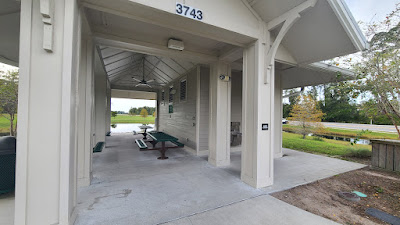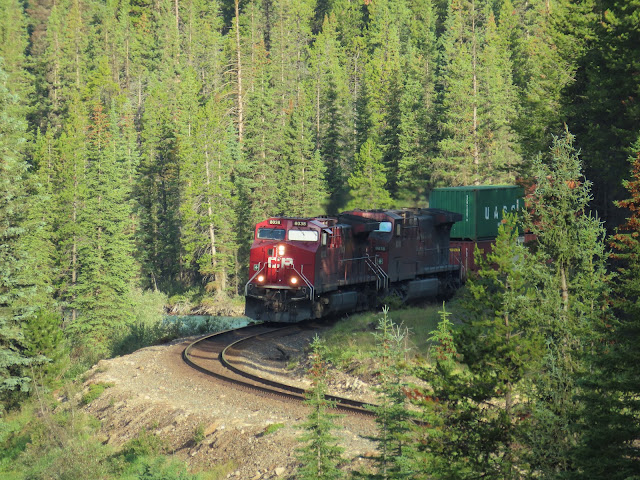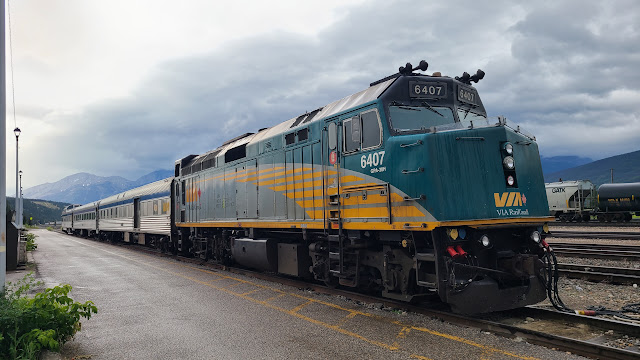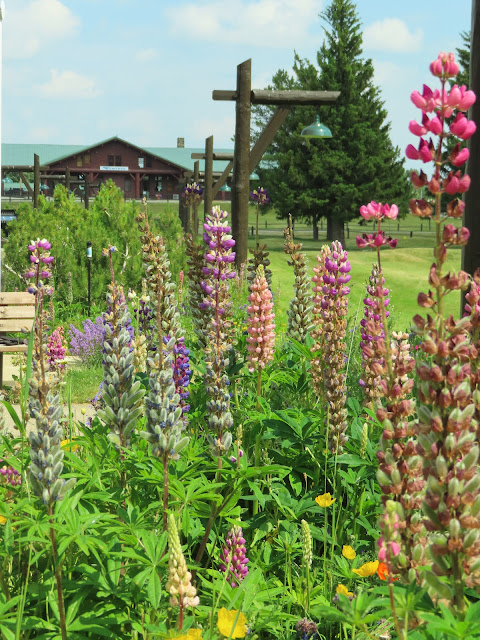Once upon a time, there was a Railroad Renaissance. Traffic grew. Revenue grew. Railroads started making real money. Stock prices went up. Flowers bloomed in the desert. Wait. Not that last one. But, things were good.
And they looked like they were going to continue to go that way.
And then things got cloudy. I wrote about it.
https://blerfblog.blogspot.com/2018/05/railroad-renaissance-or-dead-man-walking.html?m=0
It was just about then that E. Harrison Hunter went on his march to make all North American railroads in his image. His brand was PSR which stood for Precision Scheduled Railroading. It was a "bottom line" strategy that smoothed out operations so that resources could be trimmed precisely to fit, reducing costs to a very low level.
It worked. Railroads that adopted PSR netted trainloads of cash.
But, it looks like it killed the Railroad Renaissance.
The chart above show car loads of traffic - containers and trailers for intermodal. It's adjusted for GDP. A flat line would mean traffic is growing with the economy.
You can see the Rail Renaissance really only applied to Intermodal. There was real and steady growth until 2006 when some capacity issues impacted growth and the 2008 recession hit. After that, the growth took off again topping out in 2018 before declining.
Coal was declining a bit and then nosed down with the advent of fracking about 2010, when natural gas started replacing coal in earnest.
Merchandise traffic has just been on a steady decline the whole period. This is just the nature of business in the US. Supply chains aren't very well supported by fairly slow, large lot shipments. What will remain of it is boutique business. Specific commodities in fairly large quantities from specific shippers to specific consignees, like beer and sand. Also, freight that can't economically go another way, like chemicals and ethanol for blending with gasoline.
So, what's revenue look like?
Better. Again, data is normalized so that a flat line means revenue is keeping up with inflation and GDP growth. There is some real revenue growth in Merchandise up until 2013 and intermodal revenue growth is more or less steady. Coal declining after fracking boom, as expected.
The Merchandise story is one of raising rates on traffic that doesn't have real alternatives. Here's the Revenue per unit in constant 2017 dollars.
Rates increasing on Merchandise much faster than inflation. Rates for Intermodal relatively flat. Coal is just trying to squeeze out the most money from a dying franchise.
So, what does this have to do with PSR? Look at the units chart after 2018. That is when NS started all in on PSR.
Merchandise keeps up it's steady decline. Coal keeps dying in fits and starts. But, intermodal starts a steady downturn.
Why?
It's because of how PSR is designed. PSR optimizes the railroad for "what is", not "what will be". Smooth and steady flow tends to blend traffic and eliminate day of the week variability. It also tends to want all types of traffic to move at similar speeds and often, on the same train. Extra track for trains to pass each other is reduced. Once everything is "right sized", extra locomotives and engineers and conductors are eliminated. Costs are very low, but there is little surplus for handling anything out of the ordinary or getting things back on track due to extraordinary circumstance, like snow storms or floods.
To be fair, the advent of Distributed Power, where you can run very long trains with locomotives dispersed throughout the train, also had an effect. Railroads built for 100 car trains often have trouble finding places to stop and start 200 car trains. They don't fit in passing sidings or yard tracks.
The combination of these two things meant railroads were optimized for:
THE EXISTING TRAFFIC OPERATING UNDER IDEAL CIRCUMSTANCES.
This is not a growth strategy, and it is showing. New business means you have to have capacity available AHEAD of the time you take it on. Adding track, personnel and locomotives takes quite a bit of time.
Optimizing your plan around dying merchandise traffic makes it difficult to accommodate new intermodal traffic and trains. Part of this is inertia. Railroads have long believed they were born to handle box cars and would just fit those "new" intermodal and unit coal trains in around the flow. What's become clear in the past 20 or 30 years, is they are becoming primarily intermodal carriers and will have to tailor the railroad to that reality and figure out how to fit the boutique box car traffic into that flow.
Railroads need to pivot and go "all in" on intermodal growth. This means investing the huge sums of cash currently being generated on building routes and equipment designed for future logistic flow.
Anything less, they are just having a glorified "going out of business sale"





































































































